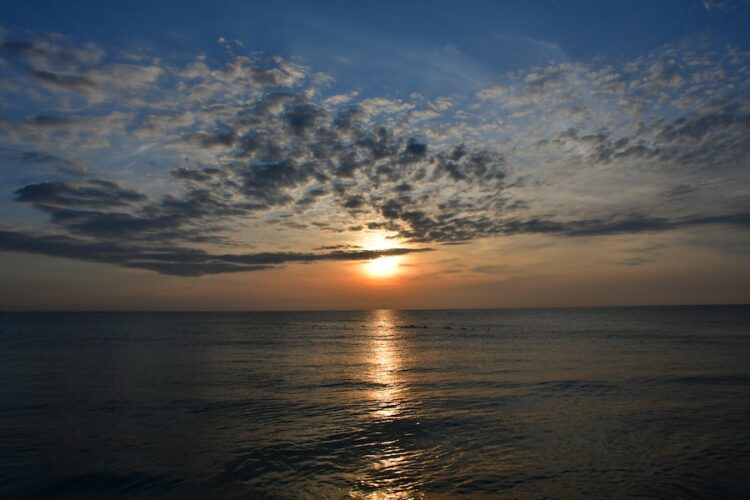Under the Tuscan Sun,” a beloved film cherished by audiences worldwide, has not only captured hearts with its captivating story but also enamored viewers with the enchanting landscapes of Tuscany, Italy. This cinematic gem has sparked curiosity among fans, inspiring a desire to know the precise locations where the movie’s magic unfolded. In this article, we embark on a journey to uncover the picturesque filming spots that brought the story to life and explore the lasting impactof this film on tourism in the stunning Tuscan region.
Where Was Under The Tuscan Sun Filmed?
Under the Tuscan Sun” was primarily filmed in the picturesque town of Cortona, Tuscany, Italy. Some scenes were also shot in Positano along the Amalfi Coast and in Rome. The central location, Villa Bramasole, is a fictional creation using a mix of real locations and sets.
Overview Of “Under The Tuscan Sun”
“Under the Tuscan Sun,” released in 2003, is a heartwarming romantic comedy-drama film directed by Audrey Wells and based on Frances Mayes’ memoir of the same name. The movie revolves around Frances Mayes, played by Diane Lane, a recently divorced writer who impulsively purchases a dilapidated villa in Tuscany, Italy, while on a vacation tour. Faced with life’s unexpected twists, Frances decides to start anew, renovating the villa and embarking on a journey of self-discovery.
Set against the breathtaking backdrop of the Tuscan countryside, the film showcases the region’s picturesque landscapes, rolling vineyards, and charming hilltop towns. Cortona, a medieval town in Tuscany, plays a prominent role in the story, providing a picturesque setting for Frances’s adventures and personal growth. The film masterfully weaves together themes of love, healing, and embracing life’s uncertainties, resonating with audiences for its profound messages of hope and resilience.
“Under the Tuscan Sun” artfully captures the essence of Tuscany, showcasing its culture, traditions, and culinary delights. The stunning visuals and evocative storytelling transport viewers into a world of beauty and warmth, enticing many to dream of visiting Tuscany and experiencing its magic firsthand. The film’s charming portrayal of Italy’s countryside and the emotional journey of its protagonist has earned it a special place in the hearts of romantics and travel enthusiasts alike, leaving an enduring legacy that continues to inspire wanderlust and appreciation for life’s serendipitous moments.
Unveiling The Filming Locations
“Under the Tuscan Sun” takes audiences on a visually captivating journey through some of the most enchanting locations in Tuscany, Italy. Here are the key filming locations that brought the magic of the film to life:
Villa Bramasole: The Heart of the Film
The iconic Villa Bramasole serves as the centerpiece of the movie. This beautiful 16th-century villa, located in the hills near Cortona, was the inspiration for Frances Mayes’ memoir and became the protagonist’s new home in the film. Its charming interiors and scenic surroundings provided the perfect backdrop for the character’s transformation and the blossoming romance.
Cortona: A Charming Tuscan Town
The picturesque town of Cortona, perched on a hillside with panoramic views of the Tuscan landscape, features prominently in the movie. Its cobbled streets, ancient architecture, and lively piazzas create a delightful atmosphere, making it an integral part of the film’s charm.
Montepulciano: A Dreamy Tuscan Setting
Another enchanting Tuscan town, Montepulciano, makes an appearance in the film. With its Renaissance palaces, quaint alleys, and vineyard-covered hills, Montepulciano provides a dreamy setting for some of the film’s most memorable scenes.
Other Notable Locations:
“Under the Tuscan Sun” showcases various other stunning spots throughout the region, such as scenic country roads, vineyards, and sunflower fields. Each location captures the essence of Tuscany’s natural beauty, contributing to the film’s enchanting allure.
The Impact Of “Under The Tuscan Sun” On Tourism
“Under the Tuscan Sun” had a significant impact on tourism in Tuscany, Italy, attracting a wave of travelers to experience the enchanting landscapes and cultural allure depicted in the film. Here are the critical aspects of its impact:
- Surge in Tourism: Following the film’s release, Tuscany experienced a notable increase in tourist arrivals. The picturesque filming locations, particularly Villa Bramasole and Cortona, became sought-after destinations for travelers seeking to immerse themselves in the romantic ambiance of the movie.
- Film Tourism Phenomenon: “Under the Tuscan Sun” exemplified the power of film tourism, a phenomenon where travelers visit locations featured in popular movies and TV shows. Fans of the film sought to recreate the magic of the protagonist’s journey, making pilgrimages to Tuscany to connect with the places they fell in love with on screen.
- Promoting Lesser-Known Destinations: While Tuscany had already been a popular tourist destination, the film helped shine a spotlight on lesser-known areas like Cortona and Montepulciano. These towns, previously overlooked by tourists, experienced a boost in visitor numbers and economic benefits from increased tourism.
- Economic Impact: The influx of tourists inspired by the film had a positive economic impact on the local communities. The hospitality industry, including hotels, restaurants, and tour operators, benefited from the surge in visitors, creating new job opportunities and supporting local businesses.
- Cultural Appreciation: “Under the Tuscan Sun” fostered an appreciation for Tuscan culture, traditions, and way of life. Tourists were drawn to the region not only for its scenic beauty but also to experience the rich history, art, and culinary delights showcased in the film.
- Long-Term Influence: Even years after its release, the film continues to inspire travelers to explore Tuscany. It remains a timeless reference for those seeking a romantic and rejuvenating escape, sustaining its impact on tourism in the region.
Preserving The Tuscan Identity Amidst Tourism
Preserving the authentic Tuscan identity amidst the influx of tourism is a crucial challenge that the region has faced since the popularity of “Under the Tuscan Sun” and the rise of film tourism. Here are some key strategies and initiatives to maintain the Tuscan identity:
- Sustainable Tourism Practices: Encouraging and implementing sustainable tourism practices is vital to minimize the environmental impact of tourism. This includes promoting eco-friendly transportation, reducing waste, and supporting businesses that prioritize sustainable practices.
- Responsible Tourist Behavior: Raising awareness among tourists about responsible behavior is essential. This involves respecting local customs and traditions, following designated trails, and being mindful of noise pollution to preserve the tranquility of local communities.
- Cultural Preservation: Local authorities and communities must safeguard their cultural heritage. This includes preserving historic landmarks, and traditional craftsmanship, and organizing cultural events that celebrate Tuscan arts, music, and cuisine.
- Limiting Overtourism: To avoid over-tourism, local governments can implement visitor management strategies, such as limiting the number of tourists in certain areas at peak times and promoting lesser-known destinations to distribute the tourist flow more evenly.
- Supporting Local Businesses: Encouraging tourists to support local businesses and artisans helps bolster the local economy and encourages the continuation of traditional crafts and trades.
- Engaging Local Communities: Involving local residents in the decision-making process regarding tourism development allows them to have a say in shaping the future of their region. Listening to their concerns and ideas can lead to more sustainable and community-centric tourism practices.
- Balancing Modernization and Tradition: Finding a balance between modernization and preserving the traditional way of life is essential. It involves integrating modern amenities to accommodate tourists without compromising the authenticity of Tuscan culture and landscapes.
The Legacy Of “Under The Tuscan Sun”
The legacy of “Under the Tuscan Sun” extends far beyond its initial release, leaving a lasting impact on both the film industry and tourism in Tuscany. Here are some aspects of its enduring legacy:
- Romanticizing Tuscany: The film’s exquisite portrayal of Tuscany’s natural beauty and cultural charm has solidified the region’s image as a romantic and picturesque destination. It continues to inspire wanderlust and draws travelers from around the world seeking to experience the enchantment depicted in the film.
- Film Tourism Icon: “Under the Tuscan Sun” remains an iconic example of film tourism, where travelers are motivated to visit locations featured in popular movies. The film’s enduring appeal has made Tuscany a top choice for film-inspired travel, sustaining tourism in the region over the years.
- Cultural Appreciation: The film sparked a renewed interest in Tuscan culture, art, and cuisine. Its depiction of traditional Italian customs and lifestyle deepened cultural appreciation and encouraged visitors to engage more meaningfully with the local heritage.
- Influence on Pop Culture: The film’s impact on popular culture is evident in references and homages to its iconic scenes and themes in subsequent movies, TV shows, and literary works. It has become an emblematic representation of the allure of Tuscany in media.
- Real Estate and Villa Bramasole: The film’s success also brought attention to Villa Bramasole, the villa featured in the movie. It became a popular destination for fans and tourists, leading to increased interest in Tuscan real estate and the purchase of vacation homes in the region.
- Relevance in Film Studies: “Under the Tuscan Sun” continues to be studied in film courses and discussions as an example of the romantic comedy-drama genre and its portrayal of travel and self-discovery themes.
- Ongoing Tourism Impact: Even years after its release, the film continues to attract tourists to Tuscany, contributing to the region’s economy and cultural preservation efforts.
Conclusion
Under the Tuscan Sun remains an indomitable force in the realms of cinema and tourism. Its vivid portrayal of Tuscany’s breathtaking landscapes and captivating culture has sparked wanderlust and ignited a passion for travel to this timeless destination. Beyond the silver screen, the film’s enduring legacy continues to inspire romance, self-discovery, and a deeper appreciation for life’s serendipitous moments. As tourists flock to the enchanting region, responsible travel practices must be embraced to ensure the preservation of Tuscany’s authentic identity, making it a cherished and cherished destination for generations to come.
FAQ’s
Where Was “Under The Tuscan Sun” Filmed?
The majority of the film was shot on location in Tuscany, Italy. Key filming locations include the picturesque town of Cortona and the iconic Villa Bramasole, which served as the central setting for the movie.
Is Villa Bramasole A Real Place?
Yes, Villa Bramasole is a real villa located in Tuscany, Italy. It was the actual home of Frances Mayes, the author of the memoir on which the film is based. The villa became famous after the release of the movie and has since attracted numerous visitors and admirers.
How Has “Under The Tuscan Sun” Influenced Tourism In Tuscany?
The film significantly impacted tourism in Tuscany, drawing attention to the region’s beauty and cultural allure. “Under the Tuscan Sun” sparked a surge in film tourism, inspiring travelers to visit the movie’s filming locations and experience the romantic charm of Tuscany firsthand.
Can I Visit The Filming Locations Seen In The Movie?
Yes, many of the filming locations featured in “Under the Tuscan Sun” are accessible to visitors. Cortona and Villa Bramasole are particularly popular destinations for fans of the film. Tourists can explore the charming town, visit the villa, and even stay in accommodations near the locations depicted in the movie.
Is “Under The Tuscan Sun” Based On A True Story?
Yes, “Under the Tuscan Sun” is based on a true story. The film is an adaptation of the memoir of the same name written by Frances Mayes, an American author who purchased and renovated the real-life Villa Bramasole in Tuscany after a life-changing trip to Italy. The movie loosely follows her experiences and transformation as depicted in the book.







